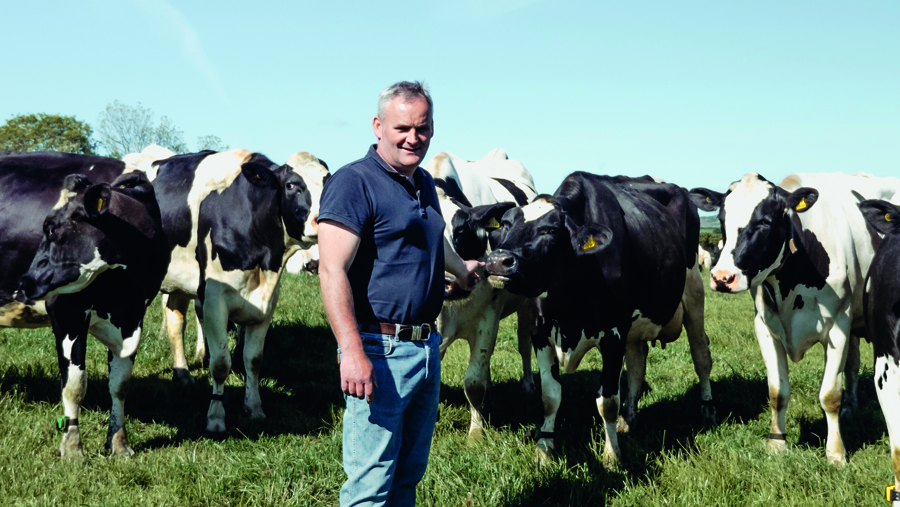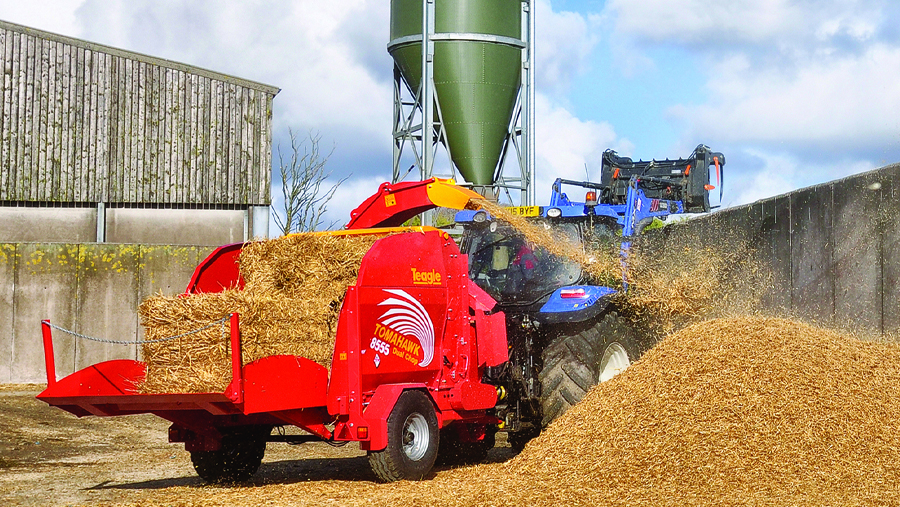Advertiser content
How to maintain butterfats during spring/summer grazing

Cornish farmer Gavin Rodda runs a 330-cow dairy herd at Rosemorran Farm, producing an average of 9,500 litres.
Milk which is produced under contract for Cathedral City branded cheese, which demands the constituents and quality of the milk are consistently high.
To assist in meeting these standards and to review the general health and wellbeing of his herd, Gavin sought the help of a nutritionist, Andy Hawken from Three Counties Feeds.
Mr Hawken says: “The challenge when taking over this farm, as their nutritionist, was to improve the milk constituents and keep the yield high. One of the tools in the armoury to achieve this was the addition of pre-chopped, short straw to the ration.

“When out to grass, traditionally butterfats crash but by adding consistent pre-chopped straw to the ration, we have seen butterfats at over 4% in the summer, and in the winter up to 4.3%.
“Also, the proteins have stayed stable at 3.3% in the summer and 3.6% in the winter.”
Straw is a great form of effective fibre but it must be processed and sufficiently supplemented with other forages or feeds to avoid straw impaction.
Mr Hawken explains: “We want to reduce the length of the straw significantly from the traditional ‘muzzle width’ which produces multiple scratching effects on to the papillae (which are like little fingers).
“More scratching stimulates more papillae, creating more surface area and increasing the nutrients back into the cow, and this is all achieved by chopping the straw consistently in the correct way.
“When you use pre-chopped straw as part of a balanced diet, you need to add extra protein to help improve rumen function, otherwise you could cause straw impaction, which can lead to major health problems for the animal.”
Straw impaction occurs when the cows’ ration does not contain enough protein and fermentable energy to feed the rumen microbes. These microbes break down the fibre – without this process, the straw becomes blocked in the stomach (omasum/abomasum).
The symptoms of straw impaction include low appetite and very solid dung.
Mr Rodda says: “At first, we used a contractor to chop our straw but this became a costly and time-consuming process. We contacted Teagle and they recommended the New Tomahawk 8555 Dual Chop with a removable screen, which we can use for both feeding and bedding.”
Tips for a successful straw-based diet
- Make sure straw is fresh, clean and palatable
- Ensure the straw has been pre-processed (using a bale processor) – this will reduce any sorting
- Straw cannot be fed on its own. It must be balanced with other forages (speak to a nutritionist for advice)
- A straw-based diet is very dry – make sure a plentiful supply of clean water is accessible
10 benefits of feeding a ration consisting of pre-processed straw
- The diet is more open and palatable
- Less or no sorting occurs, resulting in a complete diet being fed
- No over-processing; reduced mixing time
- The added straw helps to stabilise the pH levels in the stomach
- Better energy balance after calving means improved health during the transition period
- Adding straw to the diet can aid rumination and avoid acidosis
- Maintained butterfats during spring/summer grazing
- If you feed silage, adding straw will help to reduce the potassium levels, which can be beneficial during calving
- Feeding sufficient protein to pregnant cows in the last month before calving makes an important contribution to a successful calving and good colostrum quality
- Feeding pre-chopped straw pre- and post-calving will help to reduce cases of displaced abomasum by increasing food consumption and keeping the abomasum full

The unique scissor action, cutting mechanism of the Teagle Dual Chop cuts the straw consistently short and is the ideal material for feeding, creating effective rumen stimulation.
Mr Rodda adds: “The straw is chopped short with clean cut ends. Chopping as needed keeps the straw fresh, which the cows find more palatable, increasing intake and reducing waste for the dung pile.”
Provided by
Teagle is a family owned company with over 75 years experience manufacturing agricultural machinery. Teagle invest heavily in their research & development and are the market leaders for bale processors in the UK.
View our extensive range of bale processors
Contact : +44 (0)1872 560592
For more information visit our website Teagle Machinery Ltd
